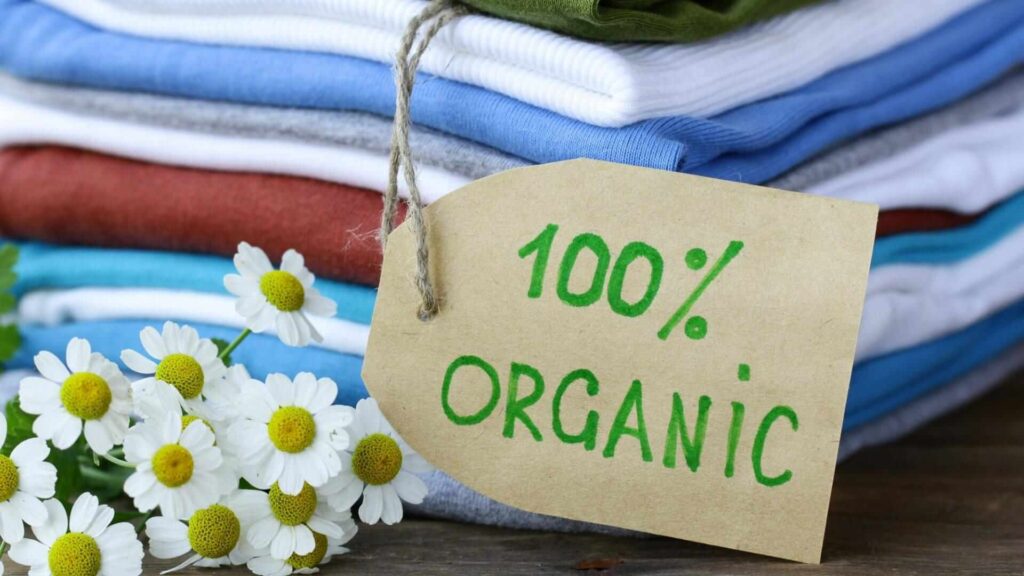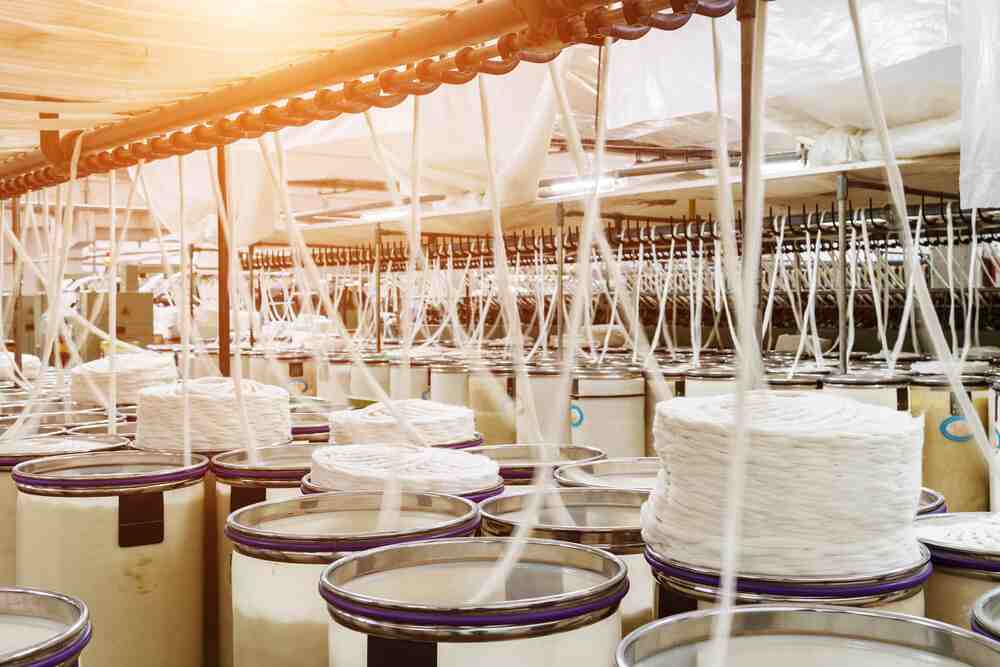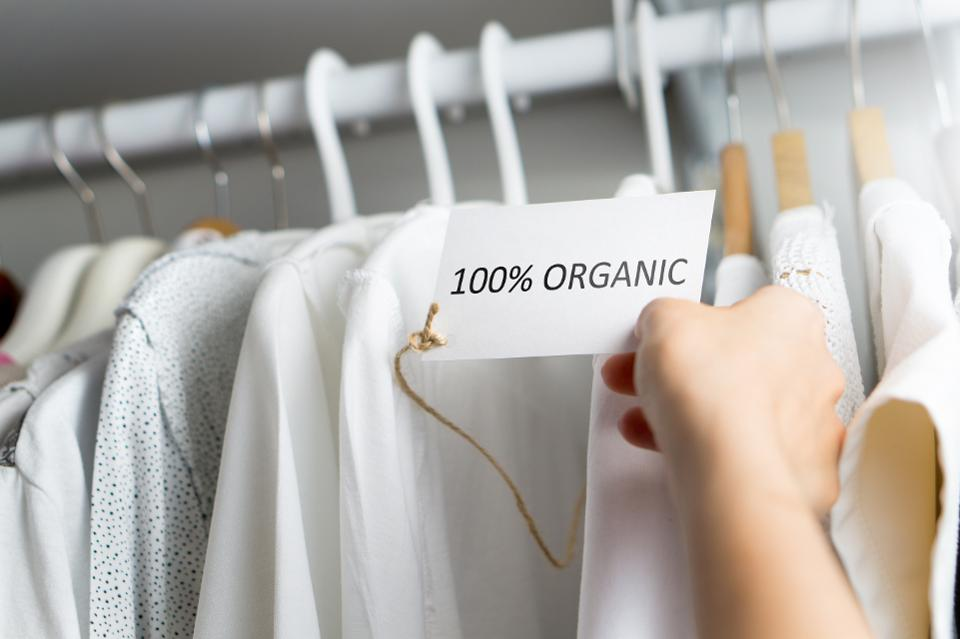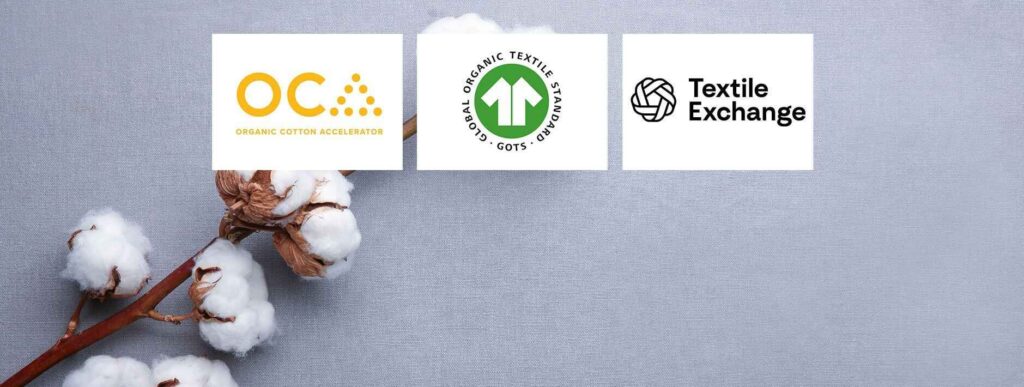
What is organic cotton fabric is a question most frequently being asked by our eco-conscious consumers as it is taking the fashion Industry by storm. Organic Cotton Fabric is becoming increasingly popular as people are becoming conscious of the climate change, global warming and the numerous health risk associated with use of harsh chemicals. Fashion connoisseurs and Brands are actively trying to including Organic Clothing in their offerings. Despite its high cost, Organic Cotton fabric reigns supreme for its softness, strength and flexibility.
Here is all the information you’ll need to understand why organic fabric is one of the most splurge-worthy eco-friendly and sustainable option when it comes to your everyday fashion staples.
Introduction
As we know, Cotton is a natural, renewable and biodegradable fibre and also the most important textile fibre. It is the second most common fibre used in the textile industry after polyester, for manufacturing apparel, textiles, towels, denim, and lingerie, making up around 38% of the textile market.
Due to its huge demand and usage, farmers have been shifting to artificial means of production using excessive chemical fertilizers and pesticides. Even though the cost of production of conventional cotton is less, this method involves the use of a large amount of water, chemicals and pesticides. The environmental impact of cultivating conventional cotton has led the cotton industries globally to shift to a more sustainable choice- organic cotton.
What is Organic Cotton? Cotton vs Organic Cotton

With Organic Cotton gaining popularity amongst the consumers, most people are wondering the difference between Cotton and Organic Cotton. To start with, both the fibres are natural and biodegradable, the main difference is that Organic Cotton is grown without toxic chemicals.
Organic cotton is cultivated in soil, free of chemicals using natural processes and materials that have a low negative impact on the environment as opposed to artificial methods. Organic Cotton is grown without using harmful pesticides, synthetic fertilizers or toxic chemicals. Organic cotton production also forbids the use of genetically modified (GM) seeds. Organic production systems ensure and maintain soil health, supports water conservation, and reduces negative impacts on rivers and freshwater thus building a biologically diverse agriculture.
What is Organic Cotton Fabric and how is Organic Cotton Fabric made?
Organic Cotton Fabric is material made from organically grown cotton fibre. The life cycle of Organic Cotton Fabric includes using naturally grown organic cotton fibres, without using GMO’s and toxic chemicals or dyes in its entire production and manufacturing process. Organic Cotton Fabric are so called when it is manufactured using organic production systems right from thread to fabric stage

Organic Cotton is grown differently than Conventional Cotton. Organic Cotton production focus on natural agriculture and production process. This agriculture method generally involves the rotation of crops, so that the soil is not stripped of its nutrients.
Any products used in production are naturally-derived. A key factor in Organic Cotton farming is that farmers plant only non-genetically modified (non-GMO) seeds. The farmers use only organic fertilizer. Weeds and pests are controlled using natural methods like trapping crops and beneficial insects rather than by using toxic chemicals and pesticides. Though many organic crops may be irrigated, most organic production relies on rainwater.
Organic cotton is harvested using natural methods once the crop is ready. During processing, warp fibres are stabilized through a method called double-plying or by using corn starch. Once the fibres are processed into yarn, eco-friendly cotton can be woven into different organic cotton textiles.
Organic Cotton Fabric making includes five stages:

- Growing Cotton
- Ginning
- Cotton Spinning
- Cotton Fabric Dyeing
- Garment Construction
Growing Cotton
The first step of making fabric is growing the raw material. The cotton seeds are planted and watered by rain. Once the cotton plant is ready to harvest it is picked by hand by the farmers.
During the growth of organic cotton, no chemical fertilizers or pesticides were used. Instead, organic compost and fertilizers are used. Pest if any is removed by hand.
Due to favourable tropical conditions, Turkey is the primary cotton producer followed by India, Tanzania, China, Peru, Senegal and more.
Ginning
After harvesting the cotton, the next stage is Ginning. The cotton is taken to the factory where the cotton fibres are separated from the seed pods by Ginning machines. The Cotton bolls are turned into fibres. During the process, dirt, stems, leaves and linters are removed. The cotton is now referred to as lint cotton after it has been removed from the seed.
During the completion process, the seeds and linters are removed which are further processed for making other useful products. Seeds can be refined to make cottonseed oil, the linters are used in the manufacturing of paper and plastics.
Cotton Spinning
In this process, the fibres are passed through a carding machine, which separates the fibres. During this process, the cotton is thoroughly cleaned.
The fibres are then combed by machinery and then finally spun to form soft yarn. The yarns are then ready to be processed into fabric by way of either knitting or weaving. After this process, the yarn or fabric is ready for dyeing. The dyeing can be done either in the yarn stage or the fabric stage
Dyeing cotton fabric
Organic cotton dyeing uses natural and low-impact dyes and doesn’t use harmful chemicals. Examples of some of the natural dyes are turmeric, organic indigo, and onion shells. Since these are natural, they are eco-friendly and safe for the environment and planet. Once the dyeing process is complete, fabric or textile is sent to the factory for making end products like clothing, bedding etc
What are the Organic Cotton Benefits? Difference between Organic Cotton and Conventional Cotton
When it comes to organic cotton vs. cotton, the difference is in production. Conventional cotton uses pesticides whereas organic cotton farming forbids the use of toxic chemicals, pesticides and GMOs.
Organic cotton is much softer on the skin as compared to conventional cotton. They are hypoallergic and do not cause skin irritations

We can summarize the benefits and differences as below
Conventional Cotton
- Water consumption: The production of regular cotton requires more water.
- Carbon Emission: It Involves more carbon dioxide emission.
- Fertilizers: It uses excessive pesticides & chemical fertilizers.
- Environmental Impact: Grown using chemicals that can harm people and the environment.
- Seed Preparation: Seeds are treated with fungicides or insecticides. Genetically Modified seeds are used.
- Soil Preparation: It uses synthetic fertilizers. There is a loss of soil due to mono-crop culture and intensive irrigation.
- Weed control: It involves aerial spraying of insecticides and pesticides to control the weed. Most commonly used pesticides are known as cancer-causing agents.
- Harvesting: Chemicals are used for defoliation.
- Production: Toxic waxes are used to stabilize warp fibres.
- Whitening: Chlorine bleaching is used which releases toxic by-products into the environment.
- Finishing: This process involves using Hot water, synthetic surfactants and additional chemicals (sometimes formaldehyde).
- Dyeing: Dyeing is done at high temperatures using heavy metals and sulfur.
- Printing: Pigments used in dyeing may be petroleum-based and contain heavy metals. Run-off spills into waterways, polluting streams.
- Fair Trade: Possible use of child or forced labour. The facilities provided may be unsafe and unhealthy. No social screening is done.
- Marketing: No marketing as awareness of organic advantage expands, the potential for the negative image has increased
- Price: Though the process of cultivating conventional cotton is initially cheaper the Long-term impact on the environment is devastating.
Organic Cotton
- Water Consumption: Organic cotton is produced with minimal water usage
- Carbon Emission: Limited carbon dioxide emissions
- Pesticides: Cultivation of Organic Cotton does not use pesticides
- Environmental Impact: Environmental impact is minimal as no use of chemicals is done
- Seed Preparation: The process uses Natural, untreated and GMO-free seeds
- Soil Preparation: It contributes to healthy soil through crop rotation. Retains moisture in the soil from increased organic matter
- weed control: A healthy soil creates natural balance. Beneficial insects and trap crops are used for weed control.
- Harvesting: Natural defoliation from freezing temperatures or through the use of water management.
- Production: Double-plying or non-toxic corn starch is used to stabilise Warp fibres.
- whitening: Safe peroxide is used for whitening cotton fibres
- Finishing: The process involves soft scour in warm water with soda ash, for a pH of 7.5 to 8.
- Dyeing: Low-impact fibre-reactive or natural dyes with low metal and sulfur content is used for dyeing.
- Printing: Low-impact, water-based inks and/or pigments are used with no heavy metals.
- Fair Trade: Social criteria in place to ensure a safe, healthy, non-abusive, non-discriminatory environment with fair wages.
- Marketing: Positive story can be told to inspire sustainability.
- Price: Though organic cotton is more expensive, its long-term advantages are priceless.
Organic Cotton Fabric Pros and Cons
The Pros and Cons of Organic Cotton can be listed below:
Pros:
- Does not use harmful pesticides and toxic chemicals, hence it is skin-friendly and allergy-proof.
- Healthier Soil is maintained as its cultivation is done through crop rotation and environment-friendly methods of farming.
- Requires less water as organic farming primarily uses rainwater for cultivation.
- As it is produced in chemical-free soil, there is no chemical retention in organic cotton fabrics.
- Encourages Safe Work as farmers are not exposed to toxic chemicals.
- Safer on the Skin as Organic cotton materials don’t contain toxic pesticides, fertilizers, insecticides and dyes.
- Certified Organic Cotton Fabrics ensures fair working conditions for workers involved in the supply chain from the grassroots.
- Since they are often grown, harvested and processed with natural and organic substances, Organic Cotton Fabrics cause far less pollution than hybrid cotton
- Organic cotton brings a radical positive change to the environment. To manufacture, just one t-shirt, regular cotton uses 16% of the world’s insecticides, 7% pesticides and 2,700 litres of water, when compared to this, organic cotton uses 62% less energy.
Cons
- Less Yield as it doesn’t use chemical-based fertilizers or genetically modified seeds
- During the dyeing process, the organic cotton may not be dyed organically and the term organic may only apply to its growing process
- Organic cotton may shrink when it is washed because it has no added chemicals and has not been treated in any way.
- It is labour intensive
- Non-uniform fibres might be obtained from organic cotton
- The cost of the Organic Cotton Fabric is higher than regular cotton, which makes it difficult for everyone to afford it.
Is Organic Cotton Sustainable?

People are becoming increasingly aware of the environmental impact of their actions in their day-to-day life. Consumers have begun to prioritize sustainability as a future way of life. Sustainability has become a major focus of the fashion industry as major brands are committing to using more organic and recycled materials.
With increasing awareness among the fashion industry about the environmental impact of conventional cotton, a significant percentage are turning towards organic means of production. The question we need to answer is how sustainable is organic cotton?
Conventional cotton being a natural biodegradable fabric is most certainly more eco-friendly than synthetic fibres. However Organic Cotton Fabric promotes sustainability as every step of cotton production ensures to reduce the environmental impact. Labelling any material as sustainable is determined by a few major factors such as the number of resources used to produce the material and the analysis life cycle of the product and its impact on each step along the way.
Listing below how Organic Cotton is sustainable:
- 100% organic cotton is completely biodegradable and compostable, thereby reducing the negative impact on the planet.
- It benefits the ecosystem and preserves biodiversity by eliminating the use of toxic chemicals, pesticides and insecticides.
- It reduces water pollution and prevents the contamination of the groundwater making drinking water safe. The water pollution caused by organically grown cotton and organically processed cotton is 91% less compared to conventional cotton production
- Organic cotton farming reduces nitrogen emissions in the atmosphere and fights global warming as it emits 94% less greenhouse gas.
- Organic cotton has one of the lowest CO2 emissions when compared to other popular fibres.
- Its low-impact processing and techniques contribute to a safer and healthier planet
- Cotton grown organically creates healthy soil and reduces soil erosion.
- It promotes healthy working conditions for farmers
The production of Organic Cotton follows strict regulations and is governed by specific standards. It also incorporates sustainable farming practices to protect the land and maintain soil health and fertility.
Challenges faced in production of Organic Cotton Fabric
Since the demand for cotton is very high, lower yields by Organic farming takes a back seat. Another challenged faced is the soil quality as chemicals in the soil have become abundant due to which organic farming is difficult. The soil needs to be first enriched to improve its quality before Organic farming can be practised. The farmers cannot afford to invest that much time due to economic and social reasons.
Is Organic Cotton better than other textiles?
We may like some fabric and maybe don’t like how certain fabric feels. Some fabrics are easier to maintain and wash, while some are difficult to wash, may snag easily or pill after a few washes. Regardless it is important to consider how these fabrics affect the environment.
Even though there is no such thing as 100% sustainable fabric, however, some fabrics are better than others.
Some least sustainable fabrics include Polyester, Acrylic, Rayon, Conventional Cotton, and Nylon.
The most sustainable fabric includes Organic Cotton, Organic Hemp fabric, Organic Linen fabric, Tencel Lyocell Fabric

Organic Cotton vs. Bamboo:
Compared to Bamboo, Organic cotton is more sustainable. Even though the Bamboo fabric is more absorbent as it has moisture-wicking properties, one reason why sustainable activewear brands prefer bamboo over organic cotton. But considering the manufacturing processes, processing bamboo rayon is more chemically intensive. Also, for the finished material, bamboo tends to shrink at a faster rate compared to organic cotton.
Organic cotton products
With the increase in demand for Organic cotton products, the use of organic cotton has now become versatile. Organic Cotton products are used in clothing, underwear, bedding and even footwear. Organic cotton is also used in personal care items such as cotton pads, sanitary products, and ear swabs.
Listing here are a few popular Organic Cotton Products:
- Organic Cotton Sheets & Duvet Covers
- Organic Cotton Quilts
- Organic Cotton Pillowcases and Shams
- Organic Cotton Clothing and Loungewear
- Organic Cotton Bathroom: Robes, Towels, & Tub Mats
- Eco-friendly Mattresses
Organic cotton Clothing
Many top brands are going sustainable by opting for eco-friendly, non-toxic organic cotton clothing and accessories. The scale of production of Organic cotton production compared to other innovative sustainable fabric options makes it a more affordable option amongst its consumers. Many brands go just beyond sourcing organic but also look for Fair Trade, certified cotton, using natural dyes, sourcing from ethical manufacturers and reducing waste in packaging and supply chain. These Organic cotton clothing brands even partner with leading sustainable farmers and implements regenerative practices. Look for GOTS-certified organic products in particular because it ensures that the fibre content is certified organic and the brand follows strict standards for social and environmental responsibility

Organic cotton clothing includes everyday basics, activewear, dresses, socks, sleepwear, skirts, shirts, and pants that are gentle on the skin and good for the planet.
What is the difference between 100% cotton and organic cotton
100% cotton fabric means that the fabric is not blended with other natural or artificial fibre and consists of only pure cotton. It indicates that the amount of cotton used in the fabric consists of 100% and is not blended with other natural or synthetic materials. 100% cotton fabrics are soft, comfortable, breathable, gentle
100% cotton content in fabric doesn’t ensure that the cotton used is organic.
Certified Organic Cotton – How to identify Organic Cotton fabric / Organic Cotton Products
It is not possible to identify garment made from Organic cotton simply by touching or feeling it. Certifications serve as important indicators when looking for organic cotton products and guarantee that the cotton is 100% organic and sustainable. Organic cotton trademark let us know that cotton is fair trade cotton, produced without the use of genetically modified seeds and toxic or chemical-free. The certification also indicates that the cotton is grown using natural products and responsible production processes.
Organizations like GOTS (Global Organic Textile Standard) have a thorough the procedure to certify a fabric as organic cotton. Along with specified standards in growing and harvesting process, this organization also takes into account the working conditions of employees. Organizations like these attempt ensures fair price for fabrics for the manufacturers and also that consumers get genuine products. Other organization includes Organic Content Standard (OCS), Oeko-Tex Standard 100, USDA-Certified Organic, Better Cotton Standard and Bluesign.

Certificate issued by the Global Organic Textile Standards organization known as GOTS sets the standard by which Organic Cotton Textiles are produced with a minimum of 70% organic materials. A garment that has a GOTS certificate has been checked by the textile standards to be sure that it is organic. Organic cotton should have this certificate to prove it is completely organic. This certificate covers manufacturing, processing, labelling, packaging and the distribution of 70% certified organic natural fibres. Any chemicals or dyes added must meet certain criteria regarding their environmental impact.
Each step taken by us either lead to an immense increase in global warming or help in combating and protect our Mother Earth. Switching to Organic and transforming our closet from regular cotton to Organic Cotton Fabric and Organic Clothing is a step towards protecting our nature.
You would also like to read our article on Bath Bomb



